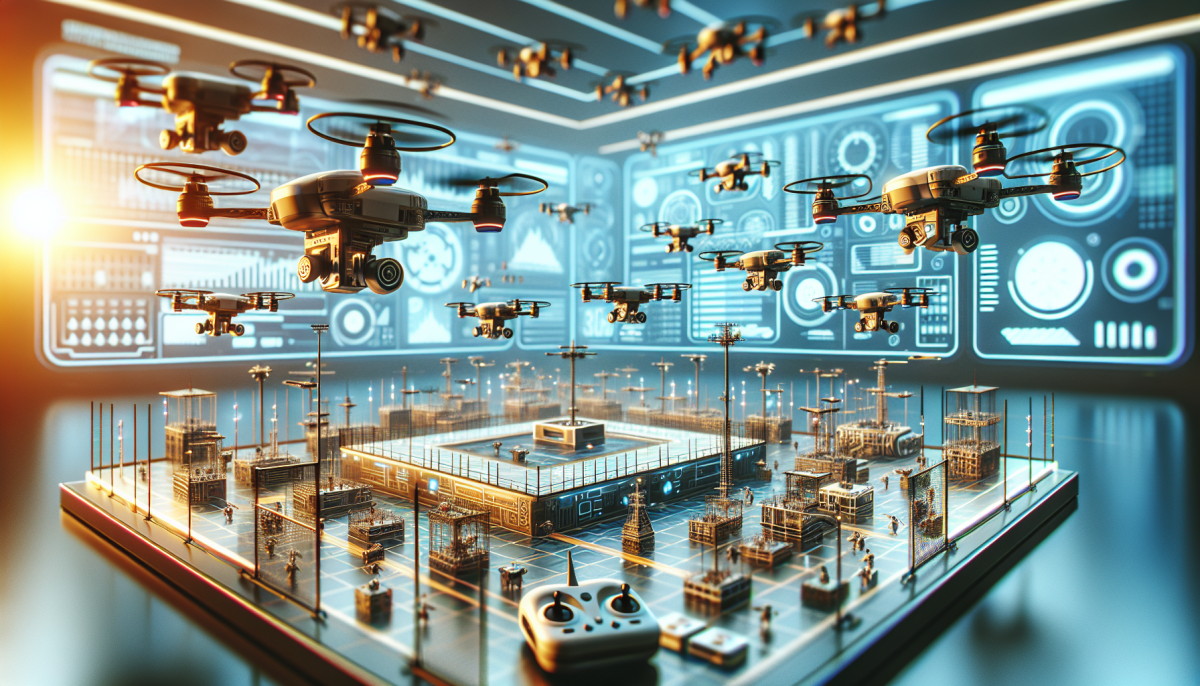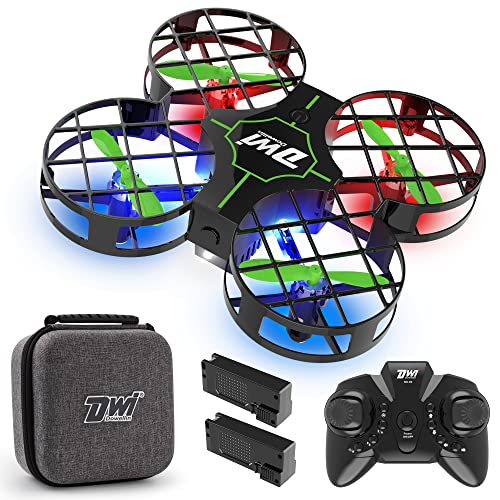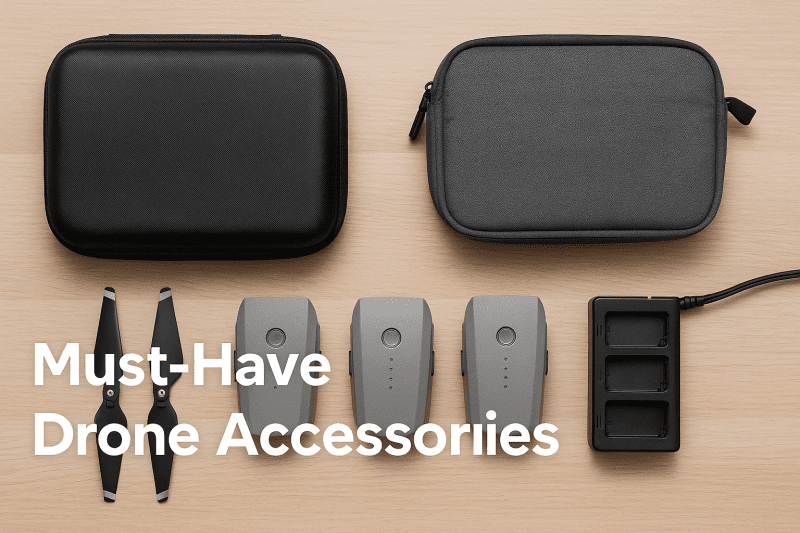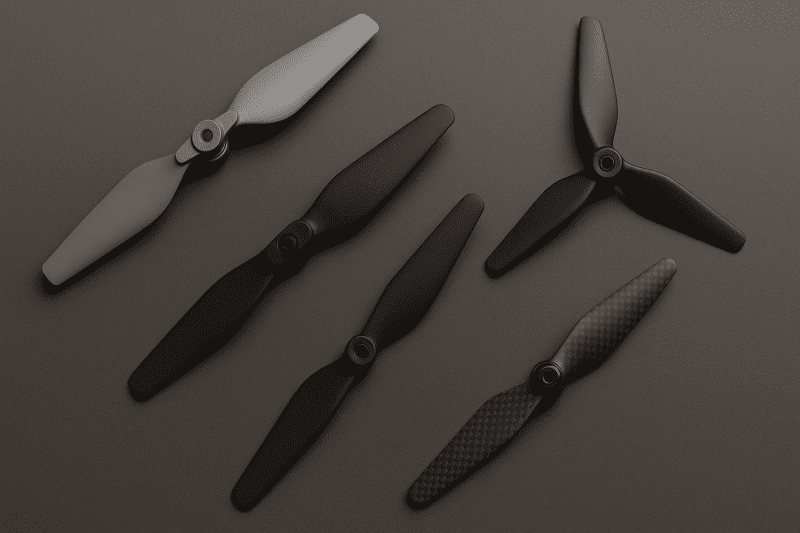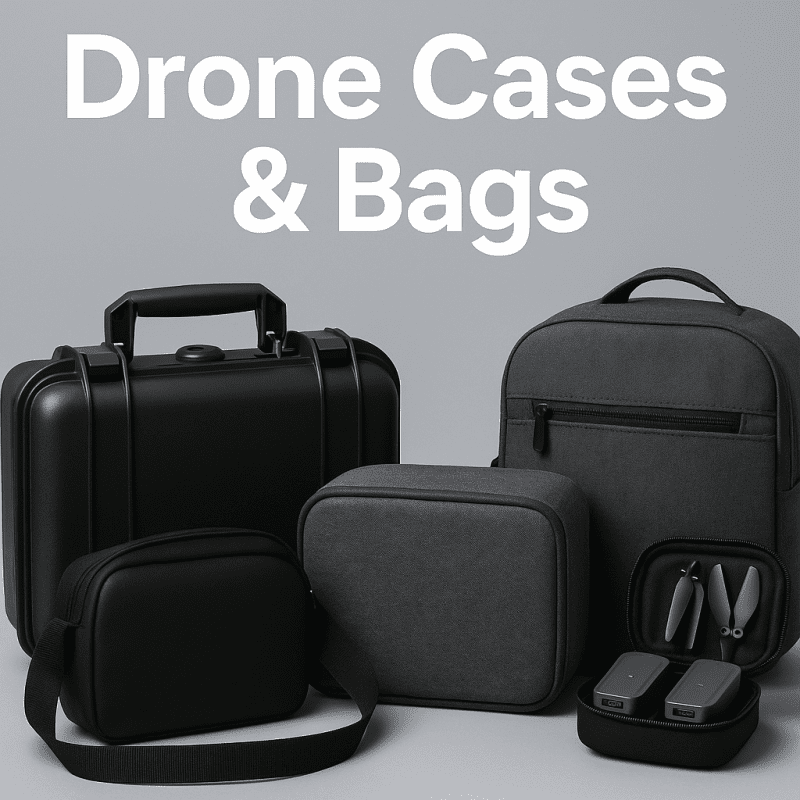The Rise of Mini Drones: How Small Unmanned Aerial Vehicles Are Revolutionizing Industries
Mini drones, also known as mini UAVs (Unmanned Aerial Vehicles), are becoming increasingly popular due to their compact size, lower cost, and advanced features. These drones are revolutionizing several industries, including agriculture, construction, filmmaking, and many more.
Agriculture
Mini drones equipped with high-resolution cameras and sensors are being used to survey large fields and crops. The drones can collect data related to soil quality, moisture level, and temperature, which helps farmers to optimize their crop yields and save time and costs by spotting problems earlier than they would in the past.
Construction
Mini drones are also revolutionizing the construction industry by providing detailed data on construction sites. Drones can capture information on building sites and can help construction managers with tasks like surveying, marking boundaries, and identifying any changes in the construction site.
Filmmaking
Mini drones are transforming the world of cinematography. Filmmakers are now able to capture stunning aerial shots without the need for helicopters, cranes or other expensive equipment.
Search and Rescue Operations
Mini drones are being used in search and rescue operations as well. They can quickly search an area in a much smaller timeframe, reducing the amount of time needed to locate a person or animal in need of help.
The rise of mini drones has been revolutionary, and their applications are expanding further with the advancement of technology. With their small size, advanced features and lower costs, mini drones are an accessible and practical tool that can help industries revolutionize their operations and boost their bottom lines.
Exploring the Capabilities and Limitations of Mini Drones: An Overview of Features and Functions
Mini drones have become increasingly popular in recent years due to their small size, lightweight nature, and affordability. These flying gadgets offer a range of capabilities and can be used for various purposes, including aerial photography, surveillance, exploration, and entertainment. However, like any technology, mini drones have their limitations that users need to be aware of in order to maximize their potential.
Features of Mini Drones
Mini drones come with a range of features that offer users a unique experience. Here are some of the common features of mini drones:
- Lightweight and compact: Mini drones are designed to be small and lightweight, making them easy to carry and maneuver.
- Camera: Many mini drones come with a built-in camera, which provides users with the ability to take aerial photos and videos.
- Real-time transmission: Some mini drones have real-time transmission capabilities, which mean that you can view the video feed from the drone in real-time on a remote device.
- Stabilization systems: Mini drones often come equipped with advanced stabilization systems that improve their stability in windy conditions, making them easier to fly.
- Lights: Many mini drones have lights that make them visible in low light conditions, which is especially useful for nighttime flying.
Functions of Mini Drones
Mini drones have a range of functions that make them versatile gadgets that can meet a variety of needs. Here are some of the common functions of mini drones:
- Exploration: Mini drones can be used to explore inaccessible areas, such as buildings or cliffs, and get a bird's eye view of the surroundings.
- Aerial photography and videography: Mini drones can capture stunning aerial photos and videos that provide a unique perspective of the world.
- Surveillance: Mini drones can be used for surveillance purposes, such as monitoring wildlife or spying on neighbors.
- Entertainment: Mini drones can be used for entertainment purposes, such as racing or performing aerial tricks.
Limitations of Mini Drones
While mini drones offer a range of capabilities, they also have their limitations that users need to be aware of in order to avoid accidents or damaging the drone. Here are some of the common limitations of mini drones:
- Battery life: Mini drones have limited battery life, which means that they can only fly for a certain amount of time before needing to be recharged.
- Range: Mini drones have limited range, which means that they cannot fly too far away from the remote control device.
- Small size: Mini drones are small and lightweight, which makes them vulnerable to wind and other environmental factors that can throw them off course.
- Limited payload capacity: Mini drones have limited payload capacity, which means that they cannot carry heavy objects.
Overall, mini drones are versatile flying gadgets that can meet a variety of needs. By understanding their features and limitations, users can maximize their potential and enjoy a unique perspective of the world from above.
Navigating the Legality and Ethics of Mini Drones: What You Need to Know Before Taking Flight".
Mini drones, also known as micro drones or toy drones, have become increasingly popular over the years. They can be used for recreation, aerial photography, and even for commercial purposes. However, before you take off with your mini drone, there are important legal and ethical considerations that you should be aware of.
Legality
Before you fly your mini drone, it’s crucial to understand the legal requirements for drone operation. In the United States, the Federal Aviation Administration (FAA) requires all drones, including mini drones, to be registered. Failure to register can result in fines up to $250,000 and even imprisonment. Additionally, the FAA has specific rules for drone flight, such as avoiding flying over people, flying below 400 feet, and maintaining visual line-of-sight with the drone. It’s important to check the laws and regulations in your area before operating your mini drone to avoid any legal repercussions.
Ethics
In addition to legal considerations, there are ethical factors to keep in mind when flying mini drones. Privacy is a major concern with drones, as they can easily enter private property and capture images without consent. Be sure to obtain permission from property owners before flying your drone over their land or near their homes. Additionally, it’s important to respect the privacy of individuals by not recording them without their consent. The noise pollution caused by drones is also a concern, as it can disturb wildlife and even humans. Be mindful of your surroundings and avoid flying your drone near wildlife or in densely populated areas.
Responsibility
Taking responsibility for your actions as a drone operator is essential. This means following the rules and regulations set by the FAA, respecting the privacy of individuals, and being cautious of your surroundings. It’s also important to know your drone’s capabilities and limitations to avoid accidents or injuries. If your drone malfunctions or causes damage, it’s your responsibility to take measures to fix it or compensate for any damages caused.
In conclusion, mini drones can be a fun and useful tool. However, it’s important to navigate the legality and ethics of drone operation before taking flight. By following the rules and regulations set by the FAA, respecting privacy, and taking responsibility for our actions, we can ensure that drone operation is safe and beneficial for everyone.
Mini Drone for Kids and Beginners
Experience the Thrill of Flight with This Easy-to-Use Mini Drone!
Product information
$29.99 $23.99
Product Review Score
4.34 out of 5 stars
123 reviews